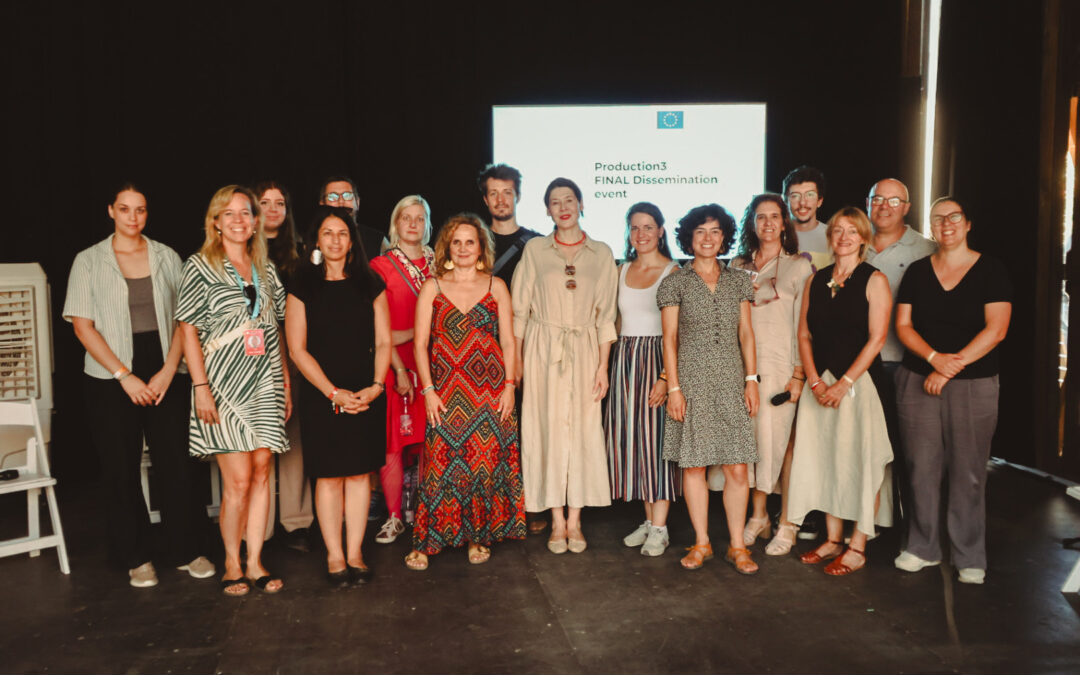On the 23rd of July 2025, the Valley of Arts Festival hosted the final dissemination event of PRODUCTION³, a project co-funded by the European Union’s Creative Europe programme. Coordinated by the Valley of Arts Festival in partnership with HÉTFA Research Institute (Hungary), Artemrede (Portugal) and ArtLink (Serbia), the three-year initiative aimed to transform the role of audiences from passive observers into active participants through supporting new innovative participatory performances and targeted audience research.
During the “Engaging Audiences: From Observation to Participation in Artistic Processes” mini-conference – organized and moderated by the HÉTFA Research Institute – we collectively explored how the role of the audience is changing in artistic processes: in what ways the audience can become an active participant in a production, and what new forms of connection can emerge between creators, organizers, and audiences. The conference also reflected on audience research carried out in the three participating countries by HÉTFA, highlighting how these findings shape the work and audience relations of artistic organizations.
The programme opened with „Redefining Audience Engagement”, a roundtable discussion exploring the organisational and project management perspectives of PRODUCTION³. Organisers from Portugal, Serbia, and Hungary reflected on the project’s three-year journey. The speakers discussed the community-building role of art, the importance of understanding local audience needs, and the challenge of balancing artistic ambition with realistic audience development goals. Experiences varied by country: in Portugal, priorities centred on mental health awareness and educational engagement; in Hungary, the emphasis was on creating performances with relevant mainstream appeal that could engage a broad, multi-generational audience, while in Serbia, the focus was on delivering high-quality classical and contemporary music performances while also reaching new and diverse audience groups. Common ground emerged around the value of emotional connection, the need for long-term strategies, and the importance of pairing audience insights with sustainable production models that respond to both cultural and practical realities.
The second discussion, „Creating with Connection”, focused on the artists’ perspectives and the creative processes developed within the project. Artistic teams from Portugal, Hungary, and Serbia presented works that integrated participatory methods at multiple stages. Approaches ranged from mental health-themed performances shaped by workshops with young people, to interactive theatre using the soundpainting method, to multi-disciplinary productions dissolving the boundaries between stage and audience. These practices showed that participation can take place at various stages: during the creation process, in the live performance itself, and through outreach activities that invite communities to engage with the performance. The discussions underlined that participation is not limited to meeting audience expectations, it also involves offering new perspectives, stimulating reflection, and sometimes challenging comfort zones.
The event closed with a clear outlook on how the project’s results can inspire future collaborations and shape participatory production methods in the years to come. This approach promoted stronger connections between audiences and artists, applied methodologies that encouraged active participation, and ensured that the specific needs and contexts of each community were carefully considered. Through this work, PRODUCTION³ showed that participation works best when it is open, flexible, and built on genuine exchange between artists, organisers, and audiences.

